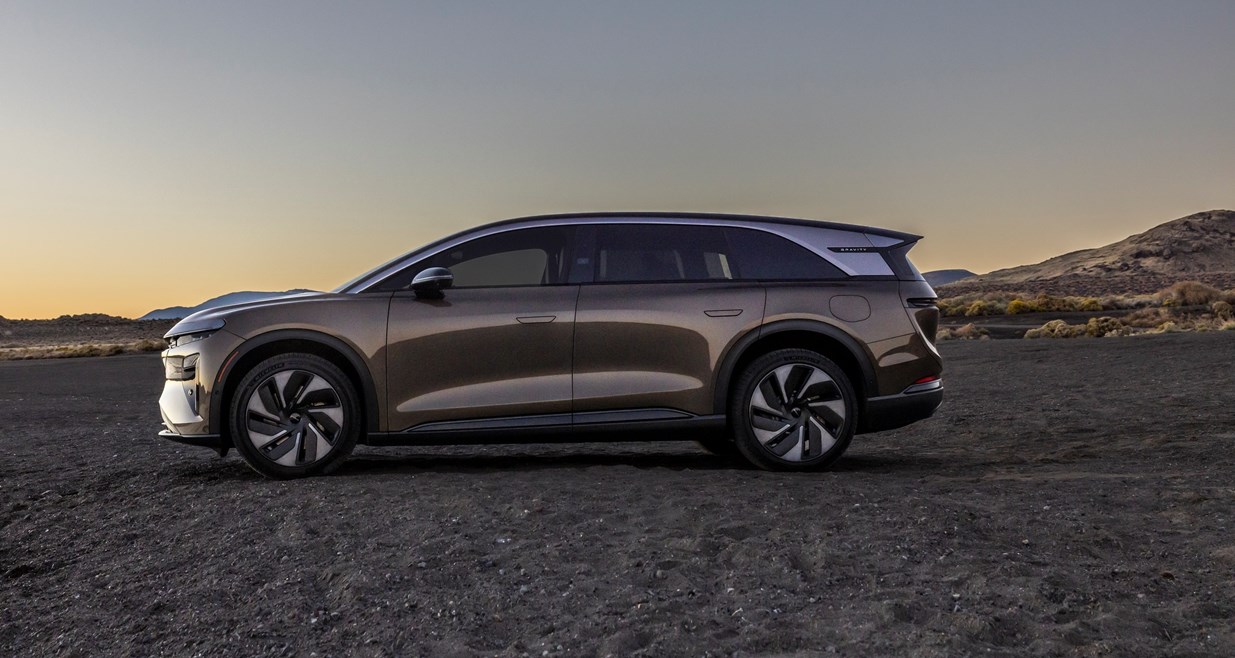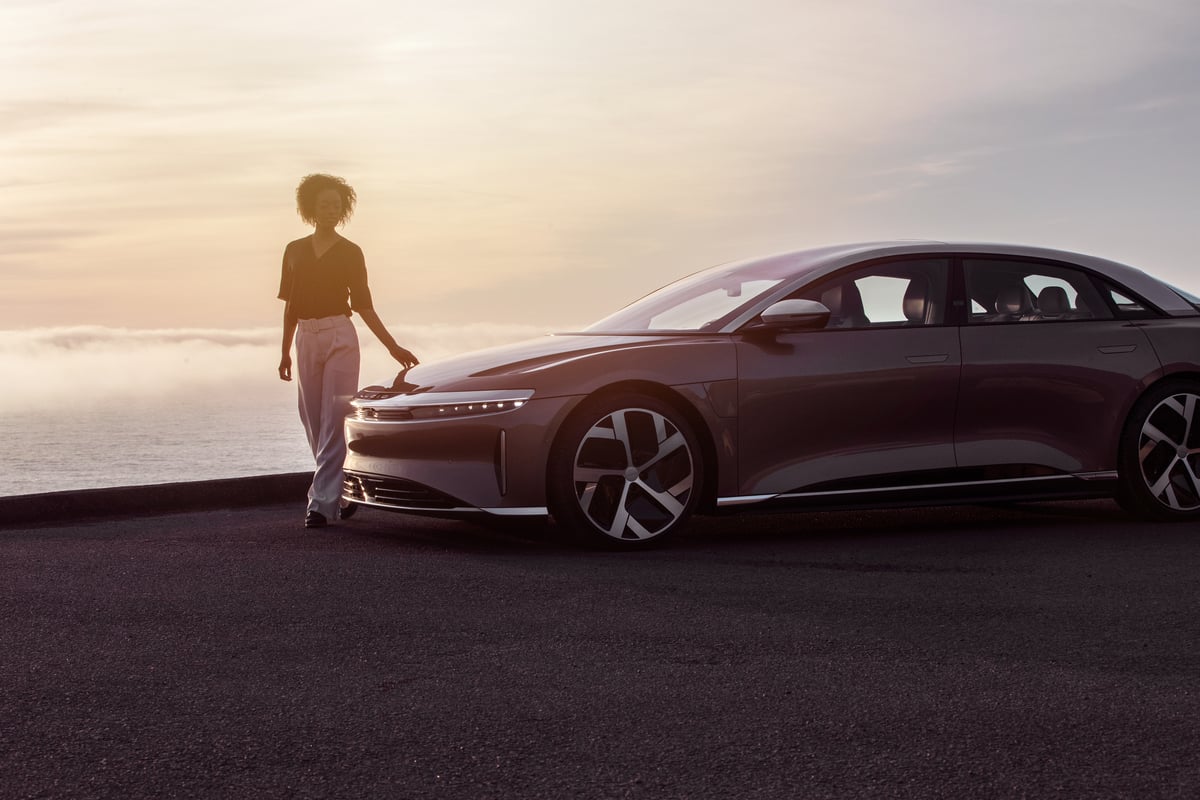Lucid Group (LCID +4.26%), a producer of luxury electric vehicles (EVs), attracted a lot of attention when it went public on July 26, 2021, through a reverse merger with a special purpose acquisition company (SPAC). Its stock opened at $25.24 and closed at a record high of $57.75 per share less than four months later.
But then it plunged -- falling so far, in fact, that last month, management felt the need to conduct a 1-for-10 reverse stock split. So as of this writing, it trades at a share price of just under $20. But had it not conducted that financial maneuver, it would be trading below $2. On a reverse-split adjusted basis, it's down by more than 90% from its price the day it joined the public markets.
Lucid initially impressed the bulls for several reasons. It was led by Tesla's former chief vehicle engineer, Peter Rawlinson. It was all set to produce its first vehicles. And management claimed it would be able to deliver 20,000 vehicles in 2022, 49,000 vehicles in 2023, and 90,000 vehicles in 2024. It started to deliver its first model, the Air sedan, in October 2021.

Image source: Lucid.
But like many other SPAC-backed EV makers, Lucid overpromised and under-delivered. It only delivered 4,369 vehicles in 2022, 6,001 vehicles in 2023, and 10,241 vehicles in 2024. It struggled with supply chain constraints, intense competition, the impacts of inflation, higher interest rates, and reduced EV subsidies on the broader EV market. Rawlinson also stepped down as CEO this past February, and the company's board still hasn't appointed his permanent replacement yet.
All of those challenges make Lucid seem like a risky investment. But should you buy its beaten-down stock while it still trades below Wall Street's average price target of $23.43?

NASDAQ: LCID
Key Data Points
What the bulls will tell you about Lucid
Lucid bulls believe the company's new models will attract more customers, that its recent partnership with Uber Technologies and autonomous vehicle technology specialist Nuro will give it a foothold in the nascent robotaxi market, and that its Saudi Arabian backers will help it expand its production facilities.
This spring, Lucid started to deliver its second vehicle, the Gravity SUV, to the general public. It plans to produce 18,000 to 20,000 vehicles for the full year as it ramps up its production of the Gravity and continues to deliver more Air sedans. In July, it partnered with Uber and Nuro in a deal that will -- if all goes to plan -- see Uber deploying at least 20,000 autonomous Gravity SUV robotaxis across the United States over the next six years. Lucid delivered its first test vehicle for that project in September.
In 2026, it plans to launch its third model, a lower-priced SUV called the Lucid Earth, which will start at less than $50,000. That new SUV could help it compete more effectively against Tesla and other EV makers. It also expects to continue gradually fulfilling a 10-year order for 100,000 vehicles from the Saudi Arabian government that it began to deliver on in 2023.
Lucid will need to expand its original AMP-1 plant in Arizona and its new AMP-2 plant in Saudi Arabia to support its growth. But it still had $4.86 billion in total liquidity at the end of its latest quarter, and it's still firmly backed by Saudi Arabia's Public Investment Fund (PIF), which owns more than 60% of Lucid's outstanding shares.
From the $808 million in revenue it brought in during 2024, analysts expect Lucid's top line to grow at a compound annual rate of 82% to $4.87 billion in 2027 as it scales up its business. They also expect it to narrow its annual net loss from 2024's $3.06 billion to just $1.79 billion in 2027.
With a market cap of $9.1 billion and a valuation of just 2.4 times next year's expected sales, the stock looks cheap. Tesla, which is bigger and reliably profitable, trades at 13 times next year's sales. In context, it looks like any positive company-specific news could drive Lucid's stock a lot higher. That might be why its insiders were net buyers of shares over the past six months.
What the bears will tell you about Lucid
Luicd bears believe it will be too difficult for the EV maker to scale up its operations. Consider that Tesla ramped up its annual deliveries from 22,442 vehicles in 2013 to 1.79 million vehicles in 2024 -- but it enjoyed early-mover advantages in the EV market, and its sales were supported by U.S. federal tax incentives for EV buyers.
Lucid is attempting to scale up in a far more saturated and fragmented EV market. President Donald Trump has dialed back U.S. subsidies, and the Big Beautiful Bill brought an end to the federal EV tax credit. Meanwhile, Lucid's luxury EVs are still pricier than Tesla's comparable vehicles.
If Lucid can't successfully ramp up its production to a level that allows it to operate profitably, it will continue to burn billions of dollars as it dilutes its shares with more secondary offerings and heavy stock-based compensation expenses. It could also struggle to find the right permanent CEO to guide it through this next expansion phase.
Is it the right time to buy Lucid's stock?
Lucid delivered 10,496 vehicles in the first nine months of 2025, but it will need to deliver more than 8,500 in the fourth quarter to hit the midpoint of its full-year forecast. That's a high bar to clear -- so I'd rather wait for Lucid to post its full third quarter earnings report on Nov. 5 before deciding if it's the right time to pull the trigger on its out-of-favor stock. I wouldn't rush to buy it while it's below $23, since it still has plenty of room to rise before it would be considered expensive.





